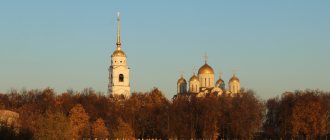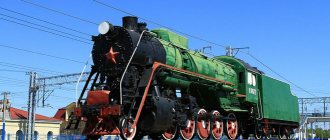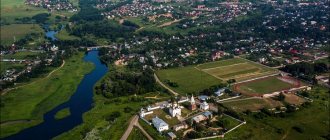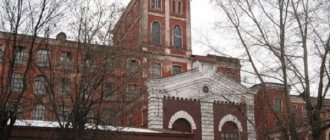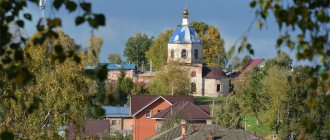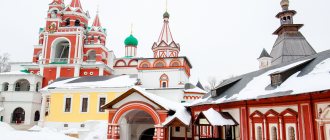Suzdal: a brief description of the city
Suzdal is located in the Vladimir region, 38 km from the regional center and 224 km along the highway from Moscow. More than 10 thousand people live here. Area - 15 km2.
The city is small, environmentally friendly, since there are no large industrial enterprises in it. The only exception is the meadery, which produces several types of mead. It is famous for its special manufacturing technology using natural products. Rarely does anyone leave without this traditional souvenir.
Its economy is based on tourism, so the hotel business is thriving. Attention is paid to the development of the food industry network: restaurants, cafes, and the provision of banking services. There are sewing workshops.
The city of Suzdal from a bird's eye view
There are no multi-storey buildings in Suzdal. There is a ban by local authorities on the construction of buildings higher than 2 floors. Most of the houses are built of wood or decorated with wood. Every effort is being made to ensure that the city retains its medieval style. His calling card is the white stone walls of monasteries combined with natural wood.
Directors have repeatedly chosen the city to film famous films: “The Youth of Peter”, “The Marriage of Balzaminov”, “The Ballad of a Soldier”, “Dead Souls”, “Blizzard”, “Tsar”, “Andrei Rublev”.
Suzdal is the site of the annual Open Russian Animated Film Festival.
Historical background, names of the city of Suzdal
Historians have been trying to uncover the mystery of the city’s name for decades. There is no consensus yet.
There is a legend about its creation, told by the chronicler Fedorov. It tells the story of three brothers from the tribe of Japheth, who were born after the end of the flood. Two of them laid the foundation for cities in the Russian lands on the shores of the Varangian Sea, and the third explored new lands of forests and swamps. Suzdal grew up in those places.
The Laurentian Chronicle of 1024 contains lines mentioning the settlement of Suzhdal, which meant “the founder destined the city to be here.” The settlement consisted of artisans and farmers. According to one of the most substantiated versions, the word Suzhdal comes from “sezdati”, which in Ancient Rus' meant “to create from clay”. Suzdal is a city made of clay.
Another group of scientists adheres to the theory that this word is of Finno-Ugric origin, like most of the geographical names of this area. This version is not scientifically substantiated enough, but it is what is mentioned in local history publications.
There are a few more assumptions:
- Some historians insist that it is based on the Greek word “Suz dulus” (“thy servant”).
- Another version is that the name of the city comes from the word “sushidalo” (“drained place”).
Suzdal sights and history.
On the banks of the Kamenka River, more than a thousand years ago, the city of Suzdal was founded. The first mention dates back to 999, and therefore is one of the oldest Russian cities. The city is a museum, thanks to the large number of monuments of the history of Rus' that have survived to this day safe and sound, despite the great troubles that the townspeople had to endure. Now Suzdal is the administrative center of the Suzdal district of the Vladimir region. Included in the “Golden Ring of Russia” tourist route. Located 26 km north of Vladimir.
Historical information about Suzdal
During excavations, archaeologists found many tools, ancient coins and various materials confirming the ancient existence of Suzdal. The Novgorod Code mentions the monk Isaac, sent to serve in Suzdal back in 999. The chronicle of 1024 introduces the events associated with the uprising of the Magi, which Prince Yaroslav the Wise came to suppress. The development and strengthening of the city began under Vladimir Monomakh.
The settlement was located very well. The territory was fenced off from the north by the steep bank of the Kamenka River, and on the other sides by hills. Additionally, earthen ramparts and ditches filled with water were erected. The construction of a fortress began - the Kremlin to protect the city from enemies. The Assumption Cathedral and the first monastery appeared.
The son of Vladimir Monomakh, Yuri Dolgoruky, continued work on strengthening, construction and development of the city. Then the rulers become: Andrei Bogolyubsky, Vsevolod III, Yuri Vsevolodovich.
During the Mongol-Tatar raid, the city suffered greatly from fires and robberies: Prince Yuri Vsevolodovich died, most of the population was captured. Of the buildings, the Deposition of the Robe Monastery survived. The surviving residents were hiding in it. At the same time, internecine wars were being waged between the princes for power. To protect the city, monasteries were built that served as fortresses: Pokrovsky and Spaso-Evfimiev.
The beginning of the 14th century was the best time of Suzdal; it became the center of the Suzdal-Nizhny Novgorod principality. Crafts are flourishing. They issue their own coins. But soon the Moscow prince wins the civil strife, the city becomes an allotment of the Moscow principality, and loses its political significance. The heyday gave way to a period of decline, as trade routes were located far away.
The city becomes the center of culture and religion. The 16th century was the time of the appearance of icon painters, minters, and the construction of more than 10 monasteries.
Residents have faced many challenges:
- double invasion of Polish-Lithuanian invaders;
- robberies of the Crimean Tatars;
- fires;
- plague epidemic.
During the reign of Peter I, Suzdal was given the status of a county town. Under Catherine II, intensive construction of buildings made of stone for civil purposes was carried out. Thanks to the trade route from Moscow to Arkhangelsk and St. Petersburg, passing through the city, trade is developing. Annual fairs are held, attended by many visiting merchants.
When the Nikolaevskaya railway was built, which bypassed Suzdal, trade began to decline, leaving small craft workshops.
The following are included in the UNESCO World Heritage List: the Suzdal Kremlin, Spaso-Evfimiev and Intercession Monasteries, the Church of Boris and Gleb in Kideksha.
Every day the number of guests arriving from all over the world increases to get acquainted with the preserved heritage of Ancient Rus'. Even individual tourists can use the services of guides.
Short story
Suzdal grew up on the site of one of the oldest settlements in North-Eastern Rus', where people from the Novgorod lands lived, looking for fertile places and “wide expanse”. The city was first mentioned in 1024 in the story of the chronicler Nestor in connection with the uprising of Smerd farmers
.
Monastery of Saint Euthymius
The uprising was caused by hunger. The Magi, approved by the pagan people, seized grain and killed the elder leaders, claiming that the tribal nobility (old children) did not allow the rain to fall, retarding the growth of grain. In the first century of its existence, Suzdal was the inheritance of the Kyiv princes, then the Pereyaslav princes; it was ruled by the prince's assistants (deputies).
In 1125, after the division of Rus' between the sons of Vladimir Monomakh, Yuri Dolgoruky received Suzdal as an inheritance and declared it the capital city of the Rostov-Suzdal principality. Striving for unanimous rule, Yuri erected his princely court separately from the place of settlement of the noble boyars, near Suzdal, in Kideksha. After the death of Yuri, his son Andrei Bogolyubsky moved the capital of the principality to Vladimir, as a result of which Suzdal lost its significance as a political center.
Deposition of Robe Monastery
With the growth and effort of the Moscow principality, the Suzdal princes united with the Nizhny Novgorod princes and formed the Nizhny Novgorod-Suzdal principality with its capital in Nizhny Novgorod. However, Suzdal failed to maintain its independence, and in 1392 it was annexed to the Moscow possessions. In 1565, Suzdal, among other cities, entered the oprichnina of Ivan the Terrible. In the 17th century, difficult times came for the city: Suzdal had not yet recovered from the raids of the Polish-Lithuanian invaders when it was raided by the Crimean Tatars in 1634.
There were only 78 courtyards left in the city suburb, and 10 years later a fire incinerated the part of the city adjacent to the Kremlin. In 1654 - 1655, a pestilence epidemic killed almost half of the city's population, that is, more than 1000 people. But after all the troubles, Suzdal was reborn from the ashes, and at the end of the 18th century it turned into a quiet county town in the Vladimir province.
Alexander Monastery
Suzdal Kremlin
Most excursions start from here. Its difference is the absence of walls.
Bird's eye view of the Suzdal Kremlin
The territory of the Kremlin served as the beginning of the construction of the city. The estimated date of its appearance is the 10th century. It was the residence of princes. Over the next two centuries, the fortress was strengthened with an earthen rampart and walls up to 1.5 km long. The rampart with a moat has survived to this day. You can walk along the well-trodden path and admire the beautiful scenery from above. A fire in 1719 destroyed the wooden buildings. Some of the buildings (St. Nicholas Church, Nativity Cathedral, Bishop's Chambers) have been preserved in good condition.
On the territory of the Kremlin, the building of St. Nicholas Church attracts attention; it looks like an old hut thanks to its unusual design. It was built back in 1766 in the village of Glotovo. In 1960, a decision was made to move it from the village to the Kremlin and place it behind the Bishops' Chambers.
St. Nicholas Church on the territory of the Suzdal Kremlin
No nails were used in the construction of the church, only wood.
The wedding episode in the film "Blizzard" was filmed in this place.
The Nativity Cathedral was built in the 12th century under Vladimir Monomakh. This is the oldest building of the Suzdal Kremlin. It was reconstructed twice. Its appearance shows the influence of various styles. The lower part of the building has been preserved since the 13th century, and the upper part from the 16th century. Elements of stone carvings are visible on the façade. The decoration of the cathedral is five huge blue domes with 365 gold stars (symbolizing the days of the year).
Mother of God Nativity Cathedral in Suzdal
Inside the cathedral there are frescoes on the walls dating back to different periods (XIII-XVII centuries), and a high iconostasis. Guests of the cathedral are greeted by the Golden Gate depicting gospel scenes on copper plates. The unusual handles in the form of 2 massive rings protruding from the mouth of the lion mask attract attention.
The cathedral was a tomb for representatives of famous princely and boyar families and the highest clergy. The following people are buried in it: the Belskys, the Shuiskys, the Shuisky-Skopins.
On the south side of the cathedral, a bell tower with an octagonal tent on top was erected. Later, chimes with hours indicated by letters were added. They call every 15 minutes. Galleries and passages connect the building with the metropolitan chambers. Restorers managed to completely restore them after the destruction caused by the fire.
In the western part of the Kremlin there is the Bishop's Courtyard. It housed residential and outbuildings that came to us from the 17th century. The Cross Chamber was intended to receive high-ranking guests. Church officials lived in the Bishop's Chambers. Now they house a museum and a restaurant.
Cross Chamber of the Suzdal Kremlin
Those interested can get acquainted with the Kremlin every day from 10 to 18 hours, except Tuesdays. On the last Friday of the month the complex is closed. Its location is Kremlyovskaya Street, 20. Ticket prices are reduced for children, pensioners and students. There is an additional cost for visiting the Nativity Cathedral.
Suzdal during the reign of Andrei Bogolyubsky
Dolgoruky's son Andrei Yuryevich, nicknamed Bogolyubsky, makes Vladimir the capital city of the principality. Following the example of his father, who built Kideksha, he also builds himself a country residence-castle: Bogolyubovo at the mouth of the Nerl. Construction of majestic white-stone churches and buildings is underway both in Bogolyubovo and in Vladimir. Bogolyubsky is also “fighting” Kyiv. But his policy is fundamentally different. A wise man and politician, he is actively looking for ways to overcome the fragmentation of Russian lands, princely civil strife, and strives to concentrate all power in one strong hands. The prince is guided exclusively by all-Russian interests. So, he came to Kyiv at the head of the united troops of eleven feudal lords in order to finally establish the significance of the new political center.
The Vladimir-Suzdal principality is gradually becoming the center of Russian life; culture and art are flourishing here. The new capital of the principality, Vladimir, is being rapidly built up, and Suzdal seems to be relegated to the background. But secular hierarchs still pay a lot of attention to him. Under Grand Duke Vsevolod III, the Nativity of the Mother of God Cathedral, the main temple of the city, was rebuilt and decorated; the territory of the Kremlin is surrounded by new fortifications; the earthen ramparts became higher and more powerful; a wooden fence with 15 towers was later built on their crest. The main one, Ilyinskaya, acquired a beautiful finish in the form of a double-headed gilded eagle.
Monastery of Saint Euthymius
The initial role of the monastery was to protect Suzdal from the north from enemy attacks. The time of its foundation is the 14th century. The wooden structures have not survived. In the 17th century, after the Polish-Lithuanian invasion, the monastery was burned. Restoration work was carried out repeatedly.
The monastery has always been patronized by rich and noble people. The monastery's churches were built with donations from the tsars - Vasily III, Ivan the Terrible, the Pozharsky princes and various boyars.
The walls of the monastery are very powerful, but the assaults passed them. They are visible over a long distance to tourists driving along the central Lenin and Spasskaya streets.
Spaso-Evfimiev Monastery in Suzdal. (Panoramic view of the walls of the monastery.)
The tomb of Dmitry Pozharsky is located on its territory. Its first archimandrite, Euthymius of Suzdal, who was elevated to the ranks of saints, is buried near the walls of the monastery.
Empress Catherine the Great ordered the monastery to be converted into a prison. Bishop Alimpiy, the predictor Abel, and Shakhovsky were kept in it. Later, the complex housed an NKVD detention center for political prisoners, a prison for prisoners of war, and a correctional facility for minors.
Spaso-Preobrazhensky Cathedral is the main cathedral of the Spaso-Evfimiev Monastery. Frescoes from the 16th century depicting the lives of saints have survived in it.
Spaso-Preobrazhensky Cathedral on the territory of the Spaso-Evfimievsky Monastery
Near the cathedral there is the Assumption Church with a refectory adjacent to it. It contains the relics of Arseny of Suzdal.
Currently, the monastery buildings house museums, storage facilities, and utility rooms. The bells in the bell tower still ring every hour.
From the observation deck next to the monastery there is a view of the beautiful landscapes of the Kamenka River, houses and temples, and the Pokrovsky Convent.
The address of the Spaso-Evfimievsky Monastery is Lenin Street, 146.
Lesson No. 58.4. "Suzdal. Cities of the Golden Ring of Russia"
Film manual for developing lessons “The World Around us” 3rd grade
Lesson type:
virtual excursion
Target
— formation of a holistic picture of the world and awareness of man’s place in it based on the unity of rational-scientific knowledge and the child’s emotional and value-based understanding of his personal experience of communicating with people and nature;
Problem:
What cities are included in the Golden Ring of Russia?
Tasks:
introduce you to the ancient cities that form the Golden Ring of Russia.
Subject results
They will learn to find the cities of the Golden Ring of Russia on a map, give examples of the sights of these cities, and understand the need to take care of historical and cultural monuments.
Universal educational activities (UUD)
Regulatory:
understand the learning task and try to complete it, act according to plan.
Cognitive:
establish cause-and-effect relationships, analyze, model.
Communicative:
discussion in groups, argue your position.
Personal results
Adequate motivation for educational activities. Evaluate achievements in the lesson.
Basic concepts and definitions
Cities of the Golden Ring.
Preparing to learn new material
City of Suzdal
Suzdal is located in the Vladimir region. It is an administrative center located on the banks of the Kamenka River. The city is surrounded by greenery and is serene and clean. Here you can truly enjoy the picturesque views of great Russia, which were sung by poets.
The history of Suzdal begins in the tenth century, as archaeologists and other scientists suggest. However, the first mentions in chronicles appear only in the next century. First entry: “Suzdal, year 1024.” The city suffered a severe drought, which led to crop failure and famine. In already Orthodox Rus', there were still faithful worshipers of idols - pagans. They took the problem with the lack of food as a sign and rebelled, showing their dissatisfaction with the departure from the faith. To solve the internal problem, the Grand Duke of Kiev himself, Yaroslav the Wise, arrived. He did not stir up the fire of hostility and, as always, acted thoughtfully and rationally. I just bought a lot of bread and distributed it to the population. The problem was solved, there was no reason for further worries. It cannot be said that the history of Suzdal was simple: epidemics, fires, devastation, capture by enemy peoples. However, it has retained its best features and today happily reveals them to tourists.
Sights of Suzdal
The first interest in the city appeared in the seventies. Tourists came here, admiring and marveling at the beautiful picturesque place. After all, Suzdal has sights that can be called primitive, historically valuable. —
Today the city has become a huge museum, a nature reserve, a real treasury of Rus'. Another distinctive feature is the holidays. The authorities, entrepreneurs and museum workers of the city made a lot of efforts, but achieved incredible success.
Maslenitsa, Christmas, a crafts festival, a cartoon festival, Indian summer - these are the days when thousands of tourists come not only from Russia, but also from far abroad. This is an amazing place that once you visit, you want to come back again and again. Below we will get acquainted with the museums, monasteries and churches of Suzdal. —
Living History Museum
This modern ancient monument appeared not so long ago. After the filming of a historical film that took place in the city, the scenery remained. Based on them, the museum was created. Various buildings, residential and commercial, reflect the life of the first settlers. They reveal the history of the time when people lived doing handicrafts, pottery, worked in forges and baked bread in their ovens. Visitors can easily plunge into the world of the past, not only see how everything might have looked, but also experience life for themselves.
Museum of Wooden Architecture
Wherever tourists go in the city, they will find themselves in the past, which has kept its secrets for contemporaries. The museums of Suzdal were created with love for history, their ancestors, and every detail carries an atmosphere of goodness. To get acquainted with the life of Russian peasants and see the real buildings of the past - that’s why many tourists come here. The Museum of Wooden Architecture has preserved and presents truly unique things. For example, peasant huts, two-story houses of that period. Here you can see how the poorest, middle class and wealthy people lived. Relatively recently, the exhibition was replenished with a real mill, which was brought from another area. Almost all the buildings are collected in different parts of the country, but they all perfectly reflect true history and life.
The Wax Museum
On Kremlevskaya Street you can see an unremarkable building from the nineteenth century, but its contents are captivating and even slightly frightening. Wax figures of famous political and cultural figures, frozen in various poses, look so realistic that it seems: take a closer look and see how they breathe.
This material was not chosen by chance for creating three-dimensional models. The use of wax began in ancient times. For witchcraft, processing mummies, protecting paintings from external influences. Over time, it became a material for creativity. In Rome, it was popular to make masks from the faces of living or dead people, which were subsequently displayed in homes.
Posad House
Various monasteries in Suzdal are popular among tourists. On the territory of one of them, Spaso-Efremovsky, the Posad House is located. It is different from other buildings in the city. A sharp plank roof extended upward, carved shutters. The house is made like its wooden counterparts, but its main material is stone. This happened due to historical events. Residents of the city engaged in trade gradually began to get rich and build more reliable and expensive houses. The building became a museum only in the seventies. Today, the interior decoration gives the impression that the house is still lived in, and the owner has only temporarily left. The interior has preserved furniture details such as built-in benches, carved tables, and cabinets coated with oil paint. It is clear from everything that the museums of Suzdal are distinguished by historical notes. Those who want to get acquainted with the life and living conditions of the 9th-11th centuries will be able to get a lot of impressions and touch history.
Suzdal Kremlin
Many of the city's buildings go back to ancient times. Suzdal has preserved its lively and interesting history. Sights conceal it within themselves and pass it on to a new generation. One of these places is the Kremlin. The city was born in its present location many centuries ago. There is no precisely known date for the first settlements. Various scientists and archaeologists put forward versions about the appearance of buildings in the 10th or 12th century. If you have chosen the Golden Ring of Russia for your tourist trip, Suzdal should definitely be included in your itinerary. Its Kremlin houses many historical exhibits that attract the attention of visitors and arouse keen interest. The Nativity Cathedral, the Assumption Church in the prince's courtyard, St. Nicholas Church - all this is located on its territory. Here you can get acquainted with the activities of famous people, see the treasures of churches, various paintings and handmade objects.
Mihali area
Curious explorers will never pass by this fascinating place. Mihali is a settlement that stands away from the city and lives its own life. It is considered a separate village, which can be reached on foot or by transport. Golden Ring of Russia: Suzdal, Mikhali - this place is fraught with a lot of discoveries and secrets that attract tourists from all over the world. A unique church that has preserved the pseudo-Russian style of St. Alexander Nevsky. The walls are made of brick, and the architectural layout is created in such a way that the building as a whole resembles a cross. A striking difference is the abundance of platbands, kokoshniks, patterns, and columns.
Spaso-Evfimievsky Monastery
The northern part of the city, the left bank, is another famous place. Once the Spaso-Preobrazhensky Monastery was renamed Evfimievsky. That was the name of the first abbot. Initially, the buildings were made of wood, but they have not survived to this day. Today tourists can observe architectural structures created at the beginning of the 17th century. The construction of such white stone churches required a lot of funds, which were collected through the efforts of the nobility. The monasteries of Suzdal contain many cathedrals. One of the most notable is Spaso-Preobrazhensky. Once it was one of the best fortresses of the Vladimir land. The monastery is surrounded by a huge stone wall, the height of which is more than a thousand meters. Twelve towers with loopholes. They are noticeable from afar and clearly stand out against the general background.
Pokrovsky Convent
In addition to museum objects, the city of Suzdal also has places that are still open today. For example, an active convent called Pokrovsky. It appeared in 1936, and its peak of prosperity occurred during the reign of Vasily III. At the beginning of the fifteenth century, everything in it underwent complete reconstruction by order of the king. This is how the Cathedral of the Intercession of the Blessed Virgin Mary and the Gate Church of the Annunciation of the Blessed Virgin Mary appeared. The tsar’s wife was also a novice of the monastery, but over many years of marriage she was never able to give the country an heir. Even rulers could not get a divorce in those days. Rather, such a concept did not even exist. That is why, by order of her husband, Solomonia was tonsured and became a novice Sophia. From that moment on, she did not leave the monastery. And after her death, her body rested in the church grounds.
Alexander Monastery
Tourists who are interested in the Golden Ring of Russia visit Suzdal to get acquainted with the architecture, culture, and history. One of the monuments is the Alexander Monastery, the roots of which are in the depths of history. Alexander Nevsky, setting out on a campaign against the Germans, ordered the construction of a monastery in Suzdal, which would be a gift to his guardian angel. In the 14th century, this building was under the wing of the Moscow princes and was called the “Big Lavra”. In the 16th century, the monastery was attacked by the Poles, and part of it burned down. The abbess submitted a petition to the king asking him to build a new church building. Her words were heard and a letter came in response. The churches of Suzdal are amazing historical monuments, each visit to which reveals something new. Variety of architectural styles, historical details. Everyone can find something interesting here.
Deposition of Robe Monastery
Russia conceals many unusual and attractive places. Suzdal was no exception. The Robe Deposition Monastery was founded back in the 12th century, at a crossroads. One of his stories is connected with Euphrosyne of Suzdal, who is canonized and pilgrims come to her relics. She was supposed to get married in a monastery, but the groom died right on the wedding day. Euphrosyne remained and took monastic vows. Suzdal offers tourists amazing picturesque views and many historical details. Here you can plunge into the atmosphere of antiquity and breathe in the aromas of the past. The Golden Ring of Russia: the cities of Suzdal, Sergiev Posad, Pereslavl-Zalessky, Rostov the Great - only part of what the country is famous for, although quite bright and memorable.
Suzdal attractions
Travel along the Golden Ring. Part 3. Suzdal .
The oldest Russian city. Shchurovo settlement. Suzdal .
Museum
of
Wooden Architecture in Suzdal
Wax
figures , sights of the city of Suzdal
Nikolaevsky
Posad in Suzdal
Spaso - Evfimiev
Monastery ( Suzdal )
Intercession
Convent Alexander
Monastery . Suzdal
Sources
of information
:
A. A. Pleshakov textbook, workbook The world around us, grade 3 Moscow
"Enlightenment" 2014
YouTube
website : https://www.youtube.com/
Hosting of presentations
around the world
- https://ppt4web.ru/nachalnaja-shkola/prezentacija-k-uroku-okruzhajushhego-mira-vo-klasse-chto-takoe-ehkonomika.html
Lazarus Church in Suzdal
Walking from the Kremlin along the main street, you always pay attention to the Lazarevskaya Church - one of the most beautiful in the central part of Suzdal.
In appearance it is similar to other posad churches in the city of those times. But this five-domed church has corner chapters that are not blind, but with windows. The wide cornice is decorated with tiles.
Church of Lazarus of the Righteous Resurrection or Lazarus Church
During the Soviet era, the interior decoration was removed and the royal gates were broken. Renovations have been made, but the interior interior still lags behind the textured facades.
Suzdal at the turn of the XII-XIII centuries
A trade and craft settlement is developing in the northeast of the Kremlin. Vsevolod III strengthened it too. Shafts are poured and a wooden wall is built along their perimeter. Suzdal residents use an artificial ditch to connect the riverbeds of the Kamenka and Gremyachka rivers. The Robe Monastery is located in the same place. Near the mouth of Gremyachka, on the southeastern corner of the settlement, Bishop John founded a monastery in honor of the patron saints of the blacksmiths Kozma and Demyan.
This is what Suzdal becomes at the turn of the 12th-13th centuries.
Deposition of Robe Monastery in Suzdal
It is located on Lenin Street near the Lazarus Church. Founded in 1207. At first it was a nunnery, and the widow's Trinity Monastery was located nearby. But then they were united. From the Trinity Monastery, only the Holy Gate and the corner tower of the fence have survived.
The Deposition of the Robe Monastery is one of the oldest monasteries in Rus'
In the monastery you should pay attention to:
- The oldest building of the monastery is the Deposition of Robe Cathedral , founded in the middle of the 16th century. Its peculiarity is the presence of three chapters. In Russian architecture, three-domed churches were rare. The interior decoration of the temple has not been preserved. Its main significance is the relics of St. Euphrosyne of Suzdal, although a small part of them survived. People come to them to pray with a request to give birth to a child, to acquire physical and spiritual health.
- The holy gate is made of brick with 2 arches , which are decorated with tiles and stone carvings. Above the arches there are two tents crowned with small domes.
- The Reverend Bell Tower reaches a height of 72 meters. For a small donation to the monastery, you can climb it, admire the surrounding views and photograph them.
- Next to the bell tower is the Sretenskaya Refectory Church .
During the years of Soviet power, the monastery suffered greatly; a power plant was created on its territory. High-voltage equipment damaged the interior of the cathedral. A fuel warehouse was located in the Holy Gates, and a cinema was located in the refectory of the church.
By carrying out restoration work, the masters tried to return the cathedral to its former appearance. The monastery is available for visiting by tourists. Free admission.
Museum of Wooden Architecture in Suzdal
Museum exhibits are located in an open area on the banks of the Kamenka River. On it you can see churches, old peasant huts and merchants' houses, barns, wells, windmills.
Museum of Wooden Architecture in Suzdal
All buildings were collected from villages, transported to one place and restored. The craftsmen tried to create interiors in accordance with the presented century.
You can visit the museum during warm periods of the year. Museum workers, dressed in national costumes, talk about the customs, work of peasants, and their tools. You are allowed to work on a weaving loom or pottery wheel.
The museum is located almost outside the city on Pushkinskaya Street. Opening hours: from 9 a.m. to 4 p.m., in summer until 9 p.m.
It is acceptable to shoot videos and take pictures.
Cucumber Day in Suzdal
In the summer, the site hosts all kinds of fairs, festivals and public celebrations. The annual “Cucumber Day” attracts people with its uniqueness.
It is celebrated on the third Saturday of July. Up to 18 thousand tourists are present, not only from Russian cities, but also from other countries. The holiday is distinguished by interesting scenarios, new every year.
Annual holiday “Cucumber Day” in Suzdal
Visitors are offered to taste pickled, fried, boiled, baked, steamed cucumbers and jam made from them. In the “Zasolochnaya” they teach pickling recipes, in the “Obzhorny Row” they treat you to various dishes, and in the “Craft Row” they sell souvenirs, teach you how to carve original designs on vegetables and make your own amulet of Akila the borage.
There is a belief that this doll, made from natural materials, helps preserve pickled cucumbers. The secret of this doll is a head filled with mustard seeds. This head is placed in brine with cucumbers. The result is that mold growth is slowed down.
The festival program includes competitions, contests, games, performances by folk groups, and concerts by pop stars. Guests are invited to take a photo in a cucumber costume. The holiday ends with the cucumber doll being lifted into the sky by green balloons.
Suzdal during the Mongol-Tatar invasion
After the death of Vsevolod, a struggle for the grand-ducal throne broke out between his sons Constantine and George (Yuri II). Things came to the point of bloodshed.
In 1217, in the battle on the Lipetsk field (near the city of Yuryev-Polsky), Constantine gained the upper hand. Two years later, Georgy Vsevolodovich nevertheless became the Grand Duke. In 1225, he built a new white-stone Cathedral of the Nativity in Suzdal on the foundation of the old one. Under him, the main entrances to the cathedral were decorated with the “Golden Gates” - a masterpiece of Russian art of the 30s of the 13th century.
In February 1238, Suzdal experienced an invasion of the Mongol-Tatars. The Laurentian Chronicle testifies: “...the Tatar camps were settled near the city of Volodymer, and they themselves took Suzhdal. And the courtyard of the princes was burned with fire and the monastery of St. Demetrius was burned and the rest was plundered... and the people were cut to pieces.”
Suzdal was subjected to severe devastation by the Mongol-Tatars twice more during the 13th century—in 1281 and 1293. Difficult trials befell the city and its inhabitants, but they found the strength to fight: for example, in 1262, Suzdal, along with the cities of Rostov, Vladimir, Murom, took part in the uprising against the Mongol-Tatar tribute collectors.
Museums: “Shchurovo ancient settlement” and wax figures
The scenery was prepared at this place for the filming of the film “The Tsar”. After the completion of the work, they decided not to clean up the built village, since it really conveyed the history of Kievan Rus. For your reference the following are presented:
- residential huts;
- armory;
- forge;
- pens with live cattle;
- garden.
Here you can take part in agricultural work, milk a cow, visit the zoo, and learn martial arts.
Museum of Living History "Shchurovo Settlement" in Suzdal
Location of the complex: Korovniki Street, 14. Opening hours: weekends from 11 a.m. (on Saturday until 4 p.m., and on Sunday until 2 p.m.). For an additional fee, you can take advantage of additional entertainment: horse riding, archery, and mastering the rules of wielding a sword.
The beginning of the creation of the wax museum was the exhibits from the exhibition from Sokolniki Park. The collection is gradually replenished with new works. Of interest are the figures of historical figures: kings, military leaders, politicians, writers.
